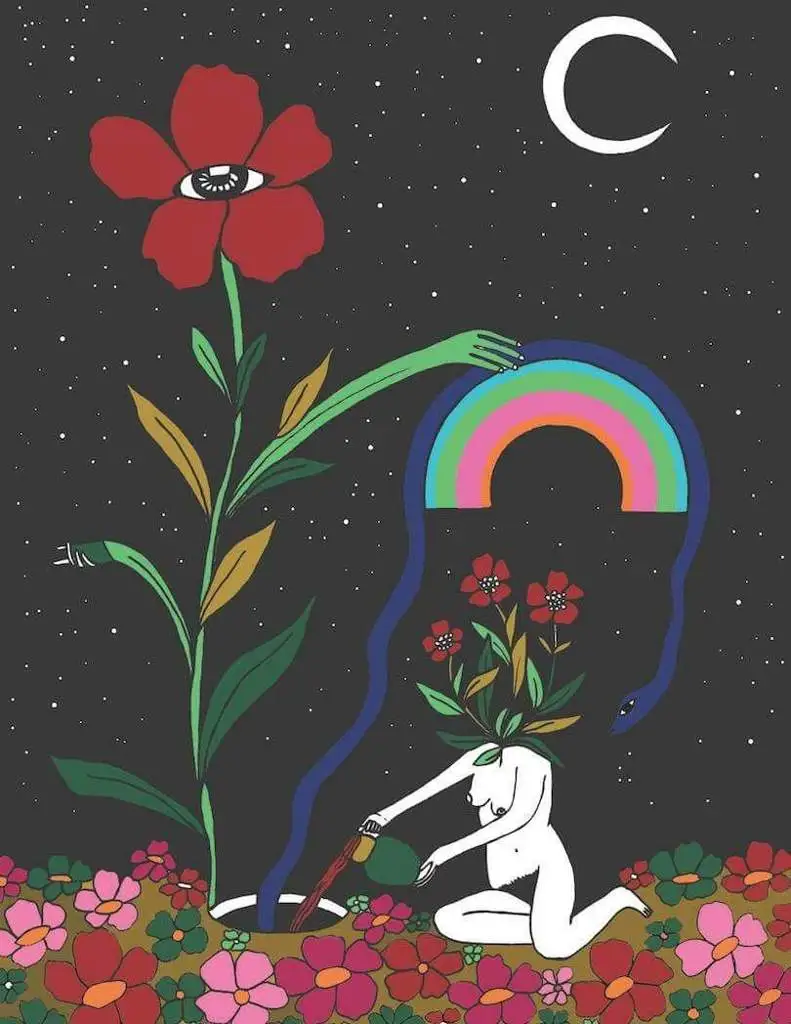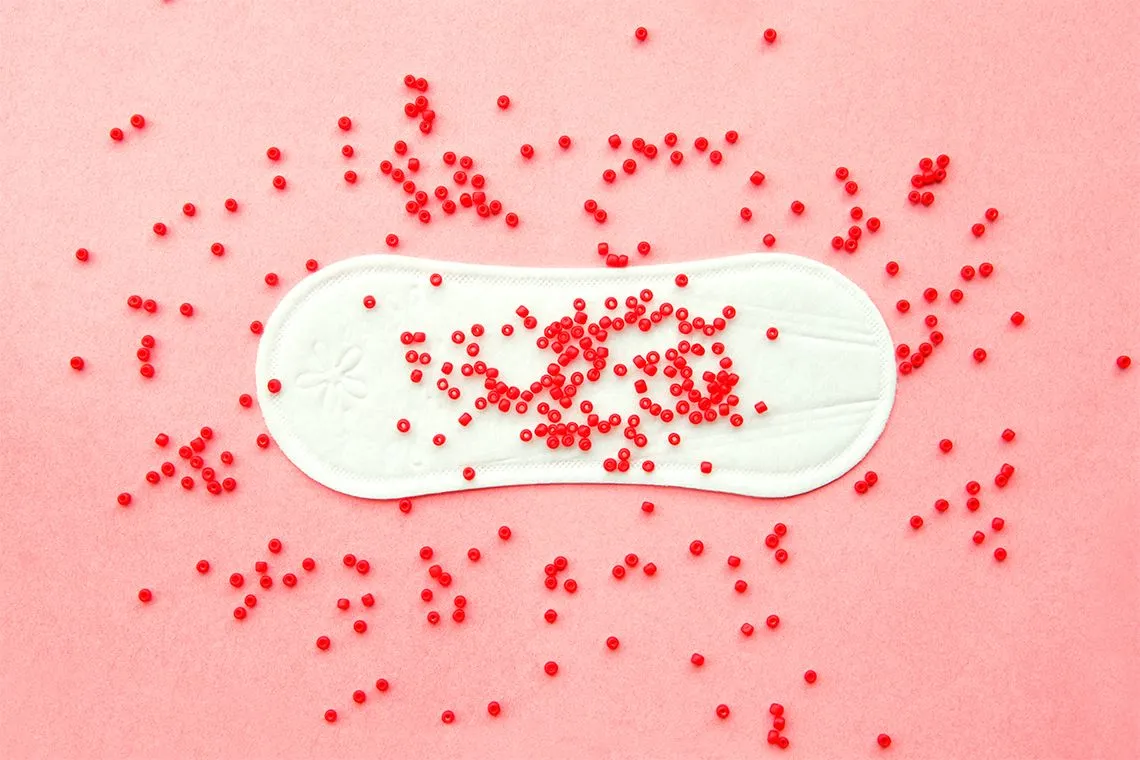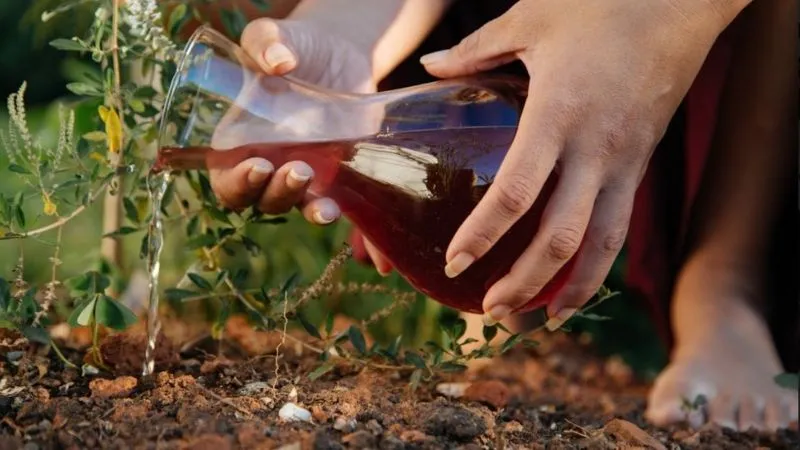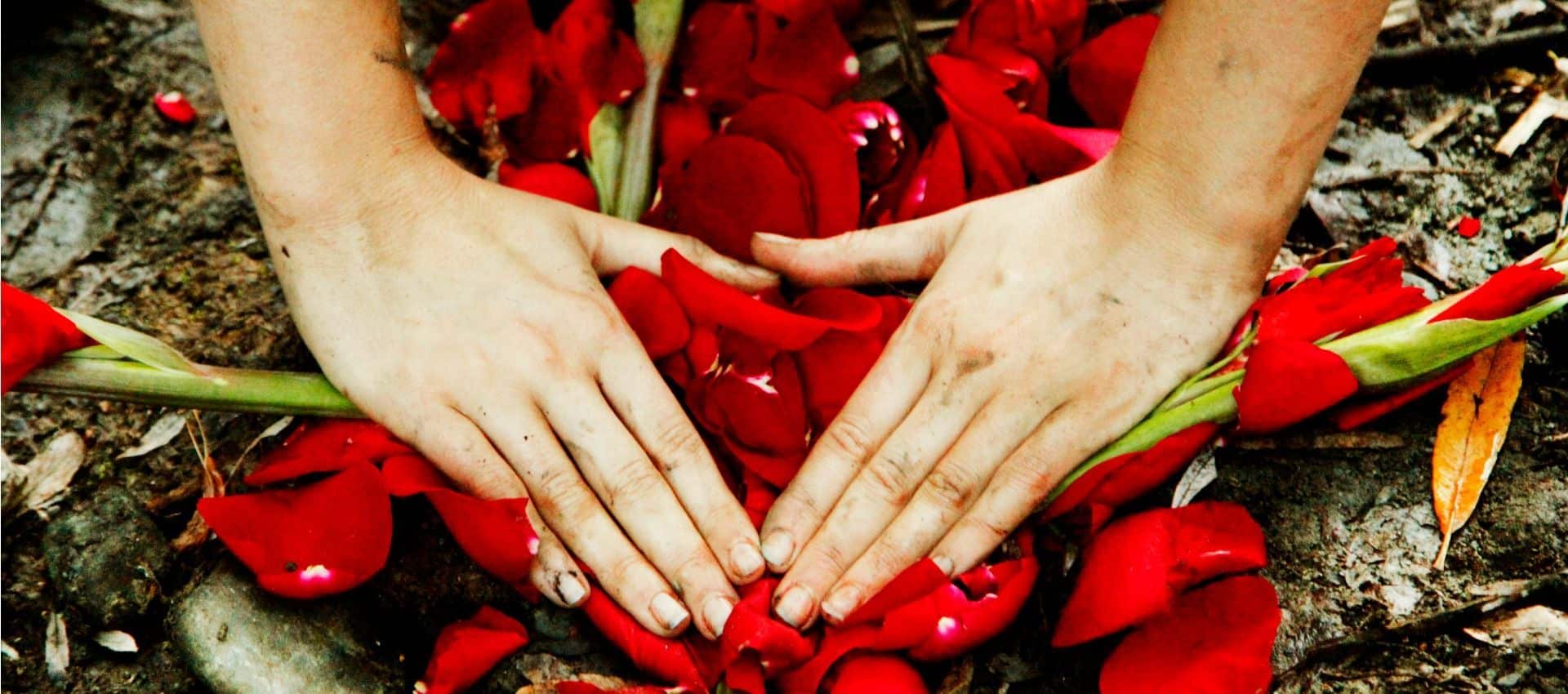Planting the moon is a very controversial ritual, which consists of throwing menstrual blood on the earth as a form of gratitude to nature.
The so-called “Planting the Moon” is a ritual that is still little known in Brazil, as well as somewhat controversial. This is due to the fact that menstruation and female blood are still seen as a taboo in society. This ritual basically consists of collecting menstrual blood and then depositing it in the earth, as a way of giving back and thanking nature for menstruation.
At first, the habit of depositing menstrual blood in the ground may seem a little peculiar and even exotic to many people. But the truth is that the Planting the Moon movement is not really a new thing. It is inspired by ancestral traditions that celebrated menstrual blood, and saw it as a strong symbol of fertility.
Therefore, Planting the Moon has become, in addition to an expression of spirituality and connection with nature, an act of female empowerment and a way of combating prejudice. In this way, the ritual helps to give new meaning to menstruation and end the disgust with menstrual blood, which is something completely natural and part of female physiology.
Therefore, today we will better understand how the Moon Planting ritual works and learn step by step how to do it.
Plantar a Lua

So, as previously stated, Planting the Moon is basically “returning” menstrual blood to the earth or mother nature. This ritual has ancient origins dating back to antiquity, when women did it naturally, without any type of pressure or questioning.
At that time, what we call Planting the Moon today was done while women carried out their activities outdoors, especially because at that time there were no sanitary pads, collectors or taboos about menstruation. At least there’s nothing to suggest that. This type of prejudice is exclusive to modernity.
In this way, the blood ran down the women’s legs and reached the ground. Over time, the importance of this liquid was noticed and they began to perform rituals in honor of it, considering menstrual blood as something sacred, related to the moon and the Goddesses.
But this changed in modernity, when in many cultures a wave of repression regarding menstruation began, establishing a disgust for blood. This consequently created a feeling of shame in women for something so normal and part of their biology.
However, not long ago, this type of ritual has been revived, along with the values of matriarchal societies. Therefore, one of the main purposes of Plantar a Lua is precisely to demystify the idea that menstrual blood is something dirty and worthy of shame. Quite the contrary, neither blood nor women should be reasons for shame, disgust or dissatisfaction, but rather for pride, strength and power. After all, women have the ability to generate and bring life into the world.
Menstruation and taboos

Menstruation marks the beginning of a woman’s fertile life while still in puberty and is completely normal. However, from a young age, many, if not all, women are taught to hide and be ashamed of their periods. Proof of this is the discomfort caused to women when they are menstruating, even greater when they show their menstrual blood.
This prejudice is explicit in various contexts and moments. For example, when a man expresses disgust towards his partner when she is menstruating, as well as the lack of understanding about PMS, which is treated as a source of ridicule and bad jokes, both by men and other women.
Therefore, the Plantar a Lua movement seeks to show how menstruating is something normal and biological. A process that the female body goes through every month, and that menstrual blood is not something dirty, and that it should not be treated with so much pressure or cause discomfort in women.
Menstruation and Planting the Moon

For the Plant the Moon movement, menstrual blood is actually a very precise thing. This is because a woman keeps her full potential to generate life inside an egg. So, when this does not happen, that is, when the egg is not fertilized to generate life, the blood must be returned to nature what was received.
In this sense, giving menstrual blood to the earth is a form of offering that shows gratitude. After all, menstrual blood has all the power to generate life. Therefore, by “planting” it in the earth, it is a symbolic way of planting new seeds that have not been fertilized to create a new life, but that can generate other things, such as ideas and projects.
Therefore, the habit of Planting the Moon is a way of reconnecting with the feminine self, with spirituality and with the power of being a woman. Menstrual blood is a form of nourishment for the earth that only women can give, the blood of life.
Every year, on the Full Moon of August, World Plant Your Moon Day is celebrated. On this date, women from all over the world take the day to honor their own blood and life. And any woman can do this, even those who don’t menstruate. This way, they can perform the ritual, plant their intentions with a liquid that represents blood, such as wine, grape juice, among others.
Step by Step on how to Plant the Moon

Planting the Moon can be a way for a woman to get in touch with her own blood and essence, giving it a new meaning, without disgust or shame. However, the decision to plant the moon or not is very individual and depends on each woman, experience and moment, as well as experience. But if you’re curious to know how this ritual is done, this step-by-step guide will help you.
Step 1 – Collect the blood
Every time you menstruate, collect the blood and then plant it. You can do this using a menstrual cup or while taking a shower, so the liquid is already diluted in the water. Then, store the menstrual blood in a glass container and add 2/3 of water to 1/3 of blood. The ideal is to cover the glass with a tissue so that the liquid can breathe until the moment you plant the moon.
The ideal is not to wait too long for this. After all, menstrual blood is organic matter, so it begins to decompose when it comes into contact with air. Furthermore, it is also recommended to Plant the Moon during the menstrual period.
Step 2 – Prepare the environment
To Plant the Moon, the ideal is to do so in a calm, reserved and clear place, which has direct contact with nature. If you are in a field, for example, take the opportunity to do this barefoot, to feel the earth on your feet. If this is the case, you can even let the blood drain directly onto the ground, without storing the liquid in a glass.
However, if it is not possible to be in nature, you can do this in a small pot of soil. It doesn’t matter the location, the important thing is to be comfortable to do this. You also have the option of choosing a specific tree or plant to Plant your Moon, something like a natural altar to give thanks.
To carry out the ritual, if you prefer, you can arrange it any way you prefer. Only in nature, or even prepare the environment, with candles, incense, images of goddesses, flowers, etc.
Step 3 – Plant the Moon
Finally, it’s time to Plant the Moon. First of all, say a kind of prayer or mantra to thank and honor everything that happened in the past cycle. As you gradually pour the blood onto the ground, you can repeat words of gratitude such as “I’m sorry, forgive me, I love you, I’m grateful” or whatever you prefer or feel at the moment. This part is completely unique and individual to each woman.
Take the opportunity to proclaim your intentions, projects and ideas. Imagine everything you want to blossom from this seed in the next click. At the end, you can salute the Moon, meditate or something similar.
Anyway, what did you think of this article? In fact, take the opportunity to also check out Calming the Heart – Dealing with anguish and ways to ease the heart.
Sources: Herself BBC Guia da Alma
Images: Pinterest Amino Women’s Laboratory BBC Personare

Sign up for our newsletter and stay up to date with exclusive news
that can transform your routine!
Warning: Undefined array key "title" in /home/storelat/public_html/wp-content/plugins/link-whisper-premium/templates/frontend/related-posts.php on line 12
Warning: Undefined array key "title_tag" in /home/storelat/public_html/wp-content/plugins/link-whisper-premium/templates/frontend/related-posts.php on line 13




